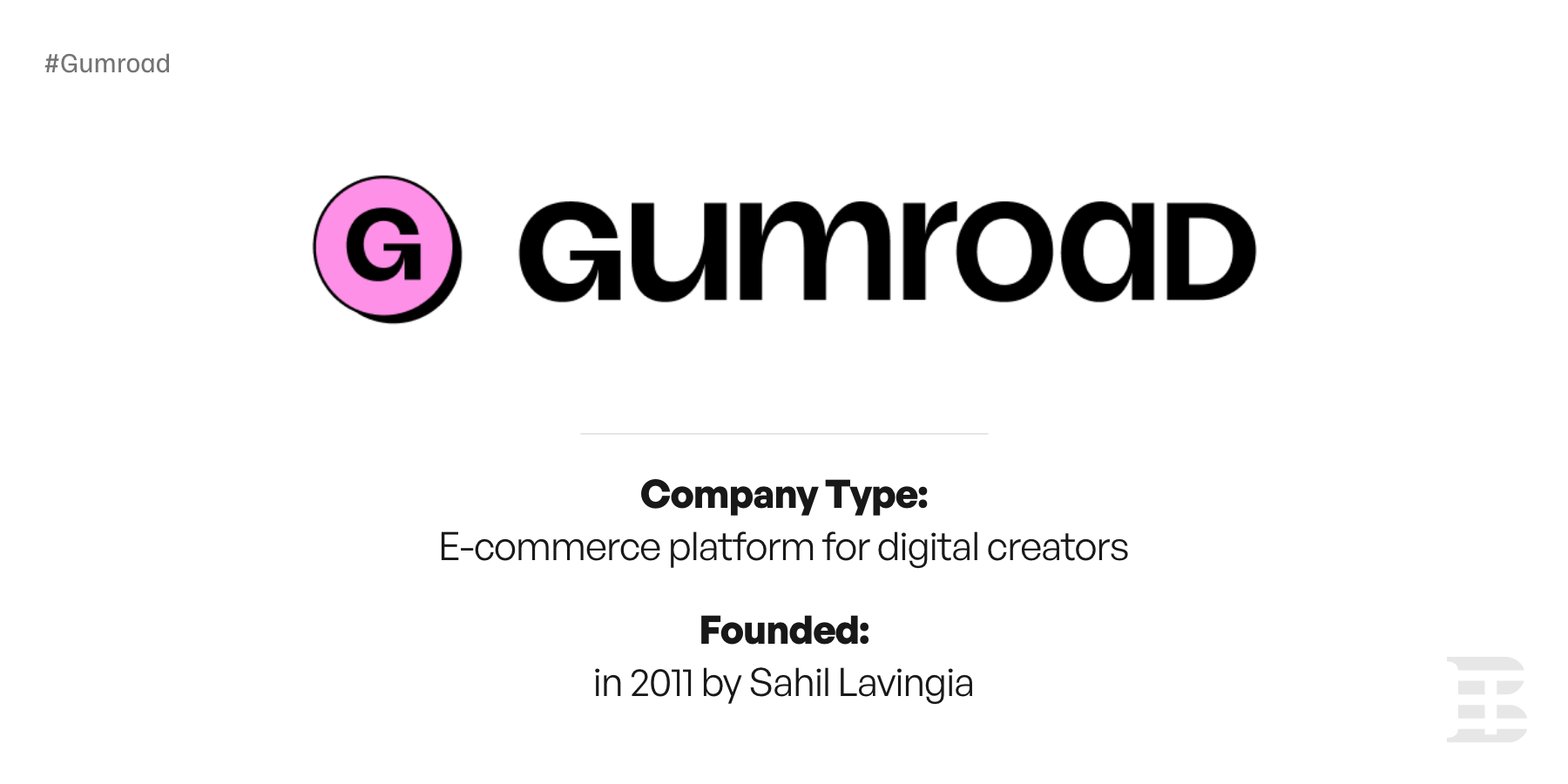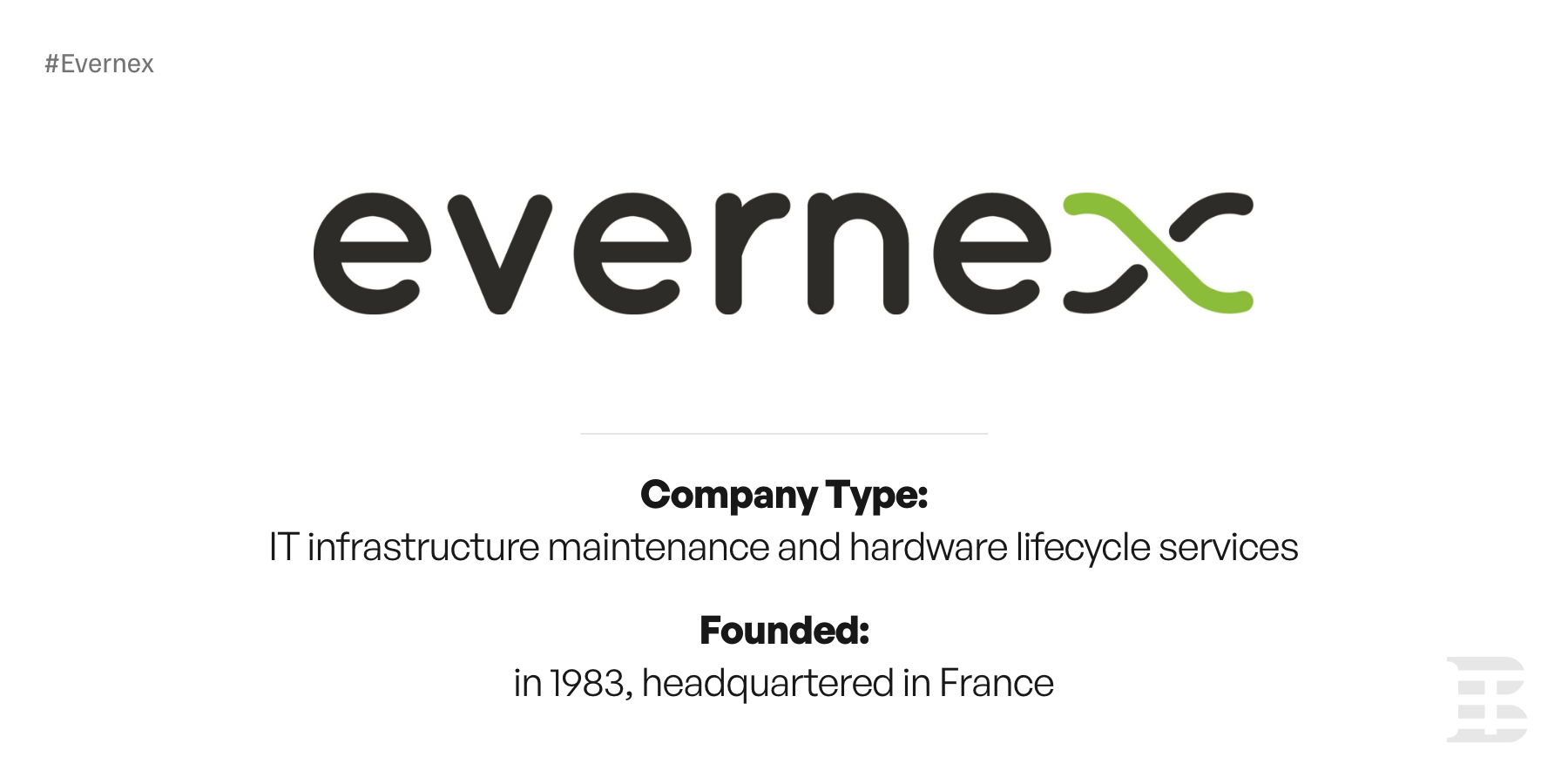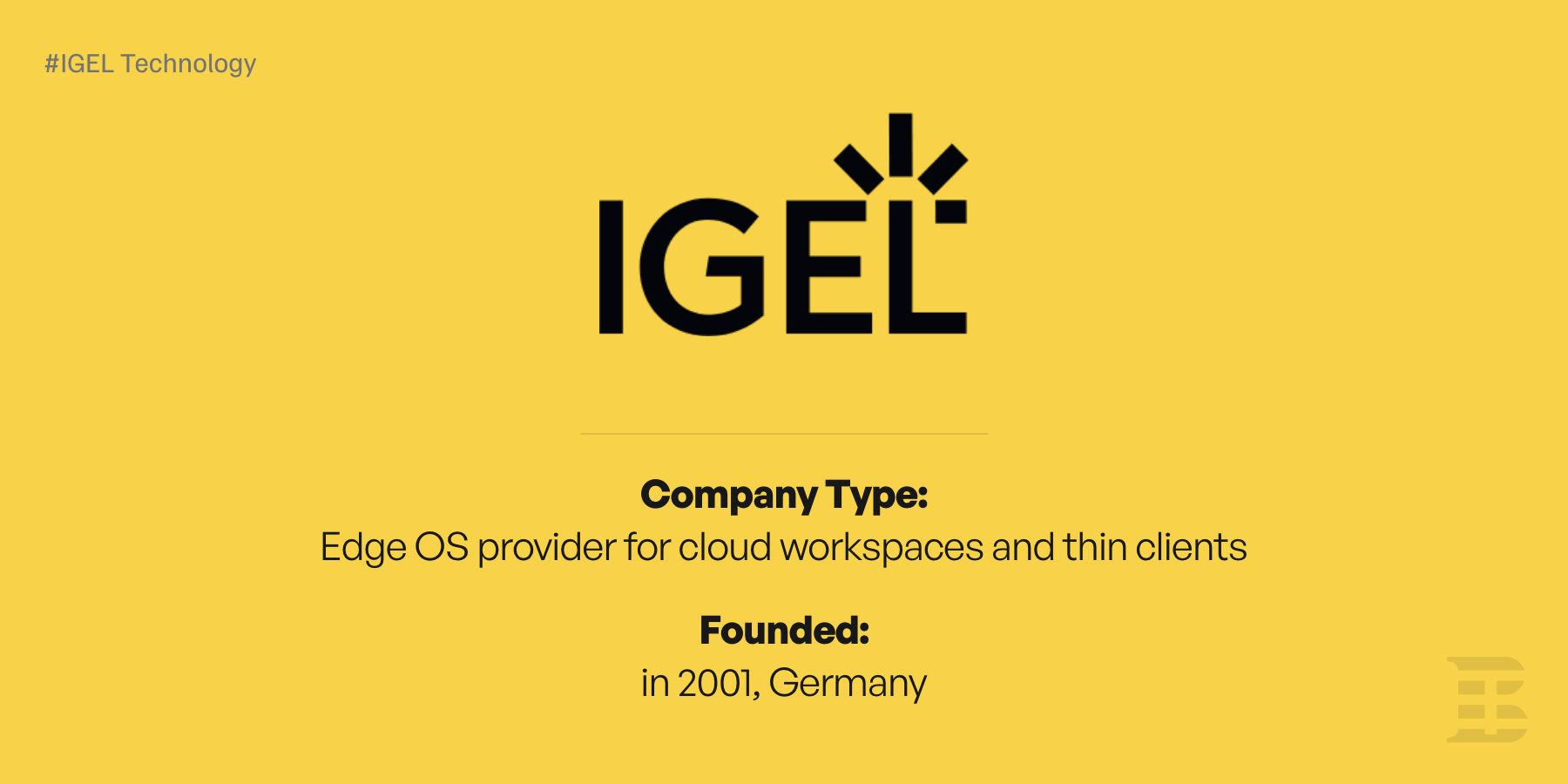How Can You Ensure Growth and Sustainability for Your IT Company?

Summary
- Sustainable growth is a must-have strategy for IT companies navigating today’s fast-changing market.
- Growth alone is not enough. Long-term success comes from balancing profitability, adaptability, and responsibility.
- Core practices for growing sustainably include automation, strong teams, recurring revenue models, and continuous market alignment.
- Sustainability actions: green infrastructure, extending hardware life, remote work, ethical procurement, and ESG transparency.
- Real-world examples (Gumroad, Evernex, IGEL) show how companies thrive by scaling with purpose, not just speed.
Running an IT company in the actual dynamic and challenging market requires more than simply delivering excellent technical or coding skills. To stay competitive, you’ll need to center on growth and sustainability, which requires a long-term mindset, strategic decision-making, and constant adaptation to new industry demands.
Whether you are expanding your company or operating in the early stages of your business development, the real challenge isn’t just growing - it’s growing sustainably.
Explore how IT companies can stay competitive, profitable, and future-proof at the same time in the following article.
What Sustainable Growth Really Means for IT Companies
For IT companies, the focus on sustainable growth is not only a strategic option but also a necessity for survival in such a dynamic and changing ecosystem as the technological one.
It is worth mentioning that healthy growth ensures long-term relevance, attracts valuable resources, such as stronger, talented people, good partners, or reliable investors, and guarantees financial stability. On the other hand, sustainability impacts optimizing resources, reducing waste, and adapting to ESG regulations, becoming an increasingly important competitive differentiator in today's IT sector and beyond.
Growth and sustainability start with a clear vision and efficient operations elaborated specifically to your company's needs and goals. What does that mean? These are reflected in:
-
Investing in automated processes and scalable technology
-
Building a strong corporate culture and skilled teams
-
Offering recurring revenue services
-
Following a strategic engagement
-
Continuously adapting to market needs
Sustainable business growth refers to a company's ability to expand its operations, increase its revenues, and improve its profitability while considering the impact on the environment, society, and long-term economic health. The strategies and practices used to grow a business are largely short-term oriented, but it is still impossible to achieve prosperity without long-term ones due to their greater value and impact on achieving the company's core goals.
|
Opportunity |
Actions IT Companies Can Take |
Business Impact |
Sustainability Impact |
|---|---|---|---|
1. Optimize Digital Infrastructure |
- Use renewable-powered cloud providers - Virtualize servers and apps - Monitor energy usage |
- Lower infrastructure costs - Higher operational efficiency |
- Reduced carbon emissions - Less power consumption |
|
2. Extend Hardware Lifespan |
- Repurpose older devices (e.g., thin clients) - Implement lifecycle management - Repair, don’t replace |
- Lower hardware spend - Maximized ROI on tech assets |
- Reduced e-waste - Fewer raw materials used |
| 3. Sustainable Procurement |
- Use FSC-certified materials - Choose eco-friendly vendors - Opt for minimal packaging |
- Stronger vendor alignment - Positive brand perception |
- Conservation of forests - Lower packaging waste |
| 4. Remote Work & Smart Offices |
- Implement hybrid/remote work - Use collaboration platforms - Install smart energy systems |
- Reduced office costs - Better team retention |
- Less commuting, lower CO₂ - Reduced facility emissions |
5. Transparency & Green Branding |
- Publish ESG reports - Join sustainability communities - Track impact with tools |
- Increased trust & investor interest - Higher client loyalty |
- Drives industry standards - Encourages accountability |
Therefore, in a context in which customers, partners, and investors prioritize social and ecological awareness, companies that combine innovation with responsibility have the greatest chance of building trust, adapting quickly, and resisting crises or other unpredictable situations.
Growth without sustainability is risky, and sustainability without growth is insufficient – real success comes from the balance between the two.
Which Steps Help Drive Growth in Your IT Company?
Let's discover how an IT company's growth process should proceed and what aspects you need to consider and apply to maintain the financial health of your business.
To achieve the best possible performance for your IT company, follow these steps:
-
Evaluate your Current State and Focus on your Strengths
To stay in good shape, it helps a lot to evaluate where you are, identify your weaknesses and difficulties, recognize your strengths, assess the risks your company currently faces, and explore the opportunities available to you now. The SWOT analysis method will help you understand these. Then, before setting any other goals, you need to know well, in a very pragmatic and realistic way, the position you are in with the company and identify the unique aspects of your business that set you apart from competitors.
-
Define Clear Growth Objectives
After you obtain a clear internal analysis of your company, it is important to set SMART goals: specific, measurable, achievable, relevant, and time-bound objectives to guide your expansion efforts. Focus on your strengths when choosing which aspects, methodologies, functions, or processes of your business to improve. Always document the data and analysis you do, so you can use it to determine the factors that influence them, but also to make the right decisions.
-
Build a Talented Team
Let's recognize that people are the most important resource in a business, especially when it comes to employees. A talented, qualified, properly motivated team, who have a good understanding of the company's objectives and are aligned with them, will inevitably bring impressive results in strengthening the company.
-
Manage Your Finances Wisely
Creating a budget is one of the most important steps you can take when it comes to managing finances effectively in a startup. Once you have established a budget, the next step is to stick to it. Money management for small businesses refers to the practices, strategies, and procedures used to manage a company's finances and keep the business profitable. So the basic directions remain: budgeting, goal setting, expense tracking, and monitoring other financial results.
-
Protect Your Intellectual Property
The IT field involves enormous individual, creative, innovative work with the tendency to generate unique ideas, all in an extremely competitive landscape. This fact determines the acute need to protect your work and authenticity, not forgetting the fact that you are also obliged to respect the intellectual property rights of others. Also, protecting intellectual property facilitates taking legal action against anyone who steals or copies it.
-
Implement Quality Control Methods
For IT companies aiming for growth and sustainability, implementing quality control methods is essential to maintaining high service standards and customer satisfaction. This involves constant code reviews, automated testing, and CI/CD practices to ensure software reliability and efficiency. Security audits and regular compliance checks help protect data and build trust. Collecting structured feedback from customers and adhering to well-defined Service Level Agreements (SLAs) further strengthens service delivery and reputation. These practices not only reduce errors and costs but also support scalable and long-term growth in such a changing and unpredictable realm as technology.
-
Scale Your Business Strategically
Scaling a business is essential for long-term success. So if you plan to grow your business, be prepared to change the way you have been operating so far. As your company expands, you may need to reassign tasks, redefine your management structure, update your product list and services, or modify other aspects of your operations.
Growth is often linear, so as your revenue increases, your costs also increase. On the other hand, scaling is exponential, showing that your revenue can grow much faster than your costs, because you optimize processes, automate, and implement technologies, but you do not invest proportionally more (e.g. more employees, or additional resources), as is the case with growth.
Even though the process itself is complex and involves a lot of effort, effective scaling will provide you with several benefits such as increased profit margins, access to new markets and investors, operational efficiency, competitive advantages, and long-term financial stability.
-
Track Performance and Review Growth Regularly
Conducting regular growth assessments, such as evaluating company performance and processes, ensures alignment with your growth goals, avoids the risk of deviating from them, and helps identify process gaps that can be addressed before they have serious consequences for your business.
Optimizing business processes is essential for ensuring growth and sustainability. Here are some KPIs to measure the success and efficiency of your actions over a specific period:
|
Operational Metrics |
Financial Metrics |
Customer-Related Metrics |
|---|---|---|
|
|
|
By tracking specific performance indicators, you can clearly see the improvements in operations, finances, and customer satisfaction that drive the long-term success of your IT company.
Therefore, growth and long-term success depend on good practices, innovation, financial discipline, and the ability to adapt or react thoughtfully but quickly to the industry's changes.
Real Case Studies from Successful IT Companies
Real-world examples provide the most important lessons. The following four IT companies – Gumroad, Swoop, Evernex, and IGEL Technology – while choosing different paths tailored to their market, business model, and mission, at some point all chose a common orientation towards sustainable growth.
Let’s take a look at their stories and see what we can learn from their experience and applied strategy.
1. Gumroad: Prioritizing Sustainable Growth Over Rapid Scaling

Gumroad is a well-known and easy-to-use e-commerce platform that helps freelancers sell their digital products, physical goods, or subscriptions directly to customers. It provides simple and accessible resources through which freelancers can sell their services in 190 countries without having to worry about the hassle of invoicing, managing payments, templates needed to reach customers, and more.
Initial Challenge: After raising $7M in VC funding, Gumroad failed to meet growth targets, resulting in major layoffs and strategic rethinking.
Growth Strategy
-
Sahil Lavingia chose to buy out investors and bootstrap the business after laying off most of the team.
-
Focused on building a simple and intuitive product with low operational overhead.
-
Scaled through organic creator adoption, community-building on Twitter/X, and product transparency.
-
Adopted a calm business model with no pressure for rapid returns or exits, allowing sustainable growth on their own terms.
Sustainability Approach
-
Gumroad runs on a tiny remote team of approximately 10 people, avoiding large-scale hiring, travel, or office costs.
-
Their model enables long-term product focus, without burning out employees or overloading operations.
-
Operates on positive cash flow and prioritizes profitability over vanity metrics like user count or press.
-
Advocates for a creator economy that doesn’t depend on extractive models or endless growth.
Gumroad is now profitable and independent, proving that lean and calm companies can still succeed in the tech space.
2. Evernex: Promoting Circular Economy Through IT Maintenance

Evernex maintains over 220,000 IT systems and is the clear leader in Europe, Latin America, MEA, and North America, demonstrating an impressive global presence. They pride themselves on giving their clients the power to grow their businesses and meet society's needs through sustainable solutions.
Initial Challenge: Frequent replacement of IT hardware generates high costs and contributes to global electronic waste.
Growth Strategy
-
Focused on third-party IT maintenance (TPM), challenging OEMs’ push for frequent replacements.
-
Expanded globally with 60+ service centers to offer 24/7 support in 165 countries.
-
Scaled by offering multi-vendor support (HP, Cisco, Dell, IBM, etc.) for end-of-life equipment.
-
Positioned itself as a cost-saving solution for IT departments seeking to extend ROI on hardware.
Sustainability Approach
-
The core business model is rooted in the circular economy - reuse, refurbish, and recycle.
-
Helps businesses avoid e-waste and unnecessary carbon emissions by extending equipment lifespan.
-
Offers eco-responsible logistics, recycling services, and lifecycle audits.
-
Publicly committed to ESG goals and environmental reporting.
“At Evernex, people are at the core of what we do: from individual IT leaders to society as a whole. Our global solutions unite financial and environmental goals to help businesses flourish without compromising the health of our planet. Technology will continue to drive us forward, and it’s time we ensure future generations have the resources and infrastructure to do it sustainably.”
- Stanislas Pilot, President & CEO
Nowadays, Evernex serves 10,000+ clients across 165 countries, combining global reach with eco-conscious operations.
3. IGEL Technology: Extending Hardware Lifespan for Sustainability

IGEL, a small German hardware company, has evolved over 20 years to become a leading innovator in cloud workspace software. Its success story is truly exceptional, considering an industry where technology companies barely survive more than 5 years. “Make the impossible possible,” are the words IGEL’s founder Heiko Gloge has used to drive himself and his company ever forward.
Initial Challenge: Enterprises were discarding functional hardware when moving to modern cloud environments, leading to high IT costs and e-waste.
Growth Strategy
-
Developed IGEL OS, a lightweight Linux-based operating system that repurposes old and existing endpoint devices, converting them into secure, high-performance cloud clients.
-
Formed strong partnerships with VDI and DaaS leaders like Microsoft (Azure Virtual Desktop), Citrix, and VMware, becoming an essential enabler for remote and hybrid work infrastructure.
-
Shifted to subscription licensing and recurring revenue models, improving long-term profitability and reducing reliance on hardware sales.
-
Hosted major global events like DISRUPT, positioning IGEL as a thought leader in workspace transformation and sustainable IT.
Sustainability Approach
-
IGEL OS allows aging devices (5–10+ years old) to run modern virtual desktop infrastructure securely and efficiently—extending their useful life and avoiding landfills.
-
The company estimates its customers can achieve up to 60% reduction in carbon emissions by reusing instead of replacing endpoint devices.
-
Provides centralized endpoint management, reducing the need for IT travel and on-site maintenance—lowering operational carbon footprints.
-
Advocates for sustainable digital workspaces, especially for healthcare, finance, and education sectors that operate on tight budgets and ESG goals.
Thousands of global organizations now use IGEL to lower their carbon footprint and reduce IT spending—while enabling hybrid and remote work environments.
Conclusion
You can ensure growth and sustainability only by radically changing your mindset and deciding what the priority factors are for you and your company - rapid and uncompromising scalability or conscious and long-term consolidation.
By performing at least some of the listed growth steps consistently and responsibly, you will be able to remain competitive and maintain a favorable financial state. Moreover, to be forward-looking and green, start taking advantage of the sustainable opportunities available, you never know which of them will bring you to the peak of prosperity and recognition.
Gumroad, Evernex, IGEL - these companies prove that long-term success is not just about rapid expansion - it's also about building systems that last. Their stories present and explain clear, sometimes brilliantly simple strategies that you can take inspiration from or even adapt to your own IT company if you find them appropriate.
You could implement a variation of solutions from bootstrapping and platform-based thinking to innovation, but if you want to make a real global change for your company, make them firmly focused on sustainability and strategic repositioning.
Related Questions & Answers
What’s the cost of poor hardware sustainability in IT?
How small can a globally successful IT company be?
How much carbon can remote work save for IT companies?
How efficient is circular IT infrastructure vs. traditional?
Does scaling really improve margins, or is it just a trend?